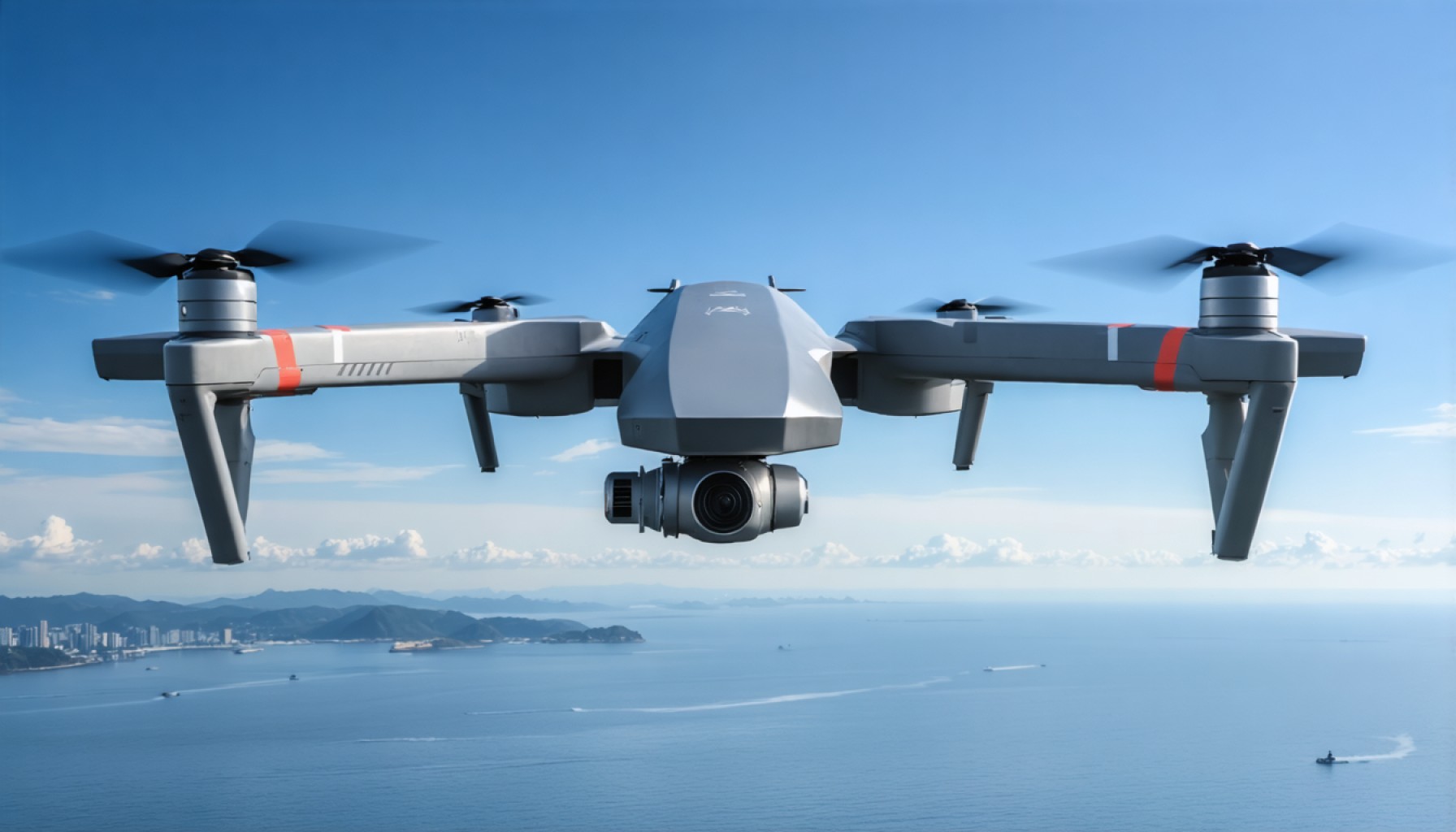- Japanese airspace near the southern islands faces increasing incursions by Chinese military drones, with 30 instances reported in the past fiscal year—the highest since 1958.
- The Nansei Islands have become a strategic focal point, reflecting China’s growing military ambitions and the intensifying U.S.-China rivalry.
- Chinese drones, including the TB-001 and GJ-2 models, possess both reconnaissance and attack capabilities, navigating near Taiwan and Japan’s Yonaguni Island.
- China’s assertive aerial and maritime activities around Taiwan highlight efforts to strengthen control in the region and challenge U.S. influence.
- Japan faces national security challenges, prompting it to strengthen alliances and defenses in response to China’s military assertiveness.
- The geopolitical tensions in the skies underscore the broader power dynamics and territorial disputes in the Asia-Pacific region.
Japan’s azure skies are becoming the theater of an unprecedented aerial chess match, as Chinese military drones increasingly weave through the airspace near the country’s southern islands. The Japan Air Self-Defense Force (JASDF) scrambled its fighter jets 30 times over the past fiscal year to intercept this rising tide of unmanned incursions, marking the highest annual tally since such operations began in 1958. As the drones hum over the windswept waters of the Nansei Islands, their presence signifies more than just routine reconnaissance; it underscores a profound strategic posturing by Beijing against a backdrop of intensifying U.S.-China rivalry.
The Nansei Islands—a sprawling chain that stretches like a delicate thread from Kagoshima to Okinawa—have become a focal point of China’s expanding military canvas. Here, the tranquil sea is the stage for a geopolitical contest as China’s drones, with their fixed-wing silhouettes, traverse this maritime corridor. Among these drones, the TB-001 and GJ-2 models have been noted, equipped with the dual capabilities for reconnaissance and attack.
At the heart of this aerial maneuvering lies Taiwan, a crucible of strategic significance resting at the epicenter of the First Island Chain—a line of defense for China against U.S. military influence. As Chinese drones chart paths through the skies between Yonaguni Island—Japan’s westernmost island—and Taiwan, they signal Beijing’s ambition to exert greater control and influence in the region.
The fiscal year of 2024 witnessed a sevenfold increase in drone intercepts compared to just a few years prior. These activities are not isolated; they are complemented by the robust movements of China’s People’s Liberation Army Navy (PLAN) and the assertive presence of the China Coast Guard (CCG) ships near contested areas such as the Senkaku Islands. The recent CCG patrol encapsulated this tension, as vessels lingered for record periods in disputed waters, challenging Japan’s territorial claims.
Yet, amidst these high-stakes maneuvers, the broader picture becomes evident: China is honing its UAV capabilities around Taiwan, which it regards as a wayward province. These developments suggest a bid to reinforce its boundary against potential adversaries while projecting power and vigilance over Taiwan.
For Japan, these persistent sorties represent not just a challenge to national security but also a prompt to forge and fortify alliances. Crafting a resilient defense, Japan seeks to collaborate with allies to counterbalance China’s military assertiveness. The stakes in these windswept skies have never been higher, as nations navigate complex territorial assertions against the backdrop of shifting global power dynamics.
As China positions its eyes in the sky and flexes maritime muscles, the world watches anxiously. The skies above the Nansei Islands carry whispers of a geopolitical storm, urging countries to stand together against unilateral changes to a fragile status quo.
Unseen Dangers: How Drones Are Reshaping East Asian Geopolitics
Strategic Implications of Chinese Drone Incursions
The rise in Chinese military drone activity near Japan’s southern territories, specifically the Nansei Islands, is a critical development in East Asian geopolitics. In the backdrop of this aerial contest, here are additional insights about the situation:
The Evolving Role of UAVs in Military Strategy
Unmanned Aerial Vehicles (UAVs) are transforming modern warfare due to their versatility and cost-effectiveness. Key drones such as the TB-001 and GJ-2, noted for their dual reconnaissance and attack capabilities, are at the forefront of this change. These drones, often called “twin-tailed scorpions,” can carry out surveillance, collect data, and execute armed strikes, making them valuable assets for modern military strategies. The UAV market is expanding, with a forecasted growth rate exceeding 13% annually, highlighting the growing importance of drones in national defense (MarketsandMarkets).
Japan’s Defensive Posture
Japan’s response to this aerial activity has been increasingly vigilant. The Japan Air Self-Defense Force (JASDF) uses advanced fighter jets such as the F-15J to intercept these drones. Japan is also enhancing its radar systems and anti-drone defenses to maintain air superiority and safeguard territorial integrity. These strategic measures are essential in countering the asymmetric threat posed by drones.
Taiwan: The Geopolitical Crucible
The strategic significance of Taiwan cannot be overstated. Seen as a critical point in the First Island Chain, Taiwan acts as a buffer against China’s influence extending into the Pacific. The ongoing drone incursions implicitly underscore China’s intent to assert control over Taiwan, which they perceive as a breakaway province. This dynamic shapes U.S. and Japanese policies towards increased military collaboration and preparedness in the region.
Broader Implications for Regional Alliances
The increase in drone activities has prompted Japan to seek closer ties with allies such as the United States and other regional powers like Australia and India, underlining the importance of alliances in contemporary global strategy. This is in line with bolstering security systems and conducting joint military exercises to ensure regional stability.
Pressing Questions
How do Chinese drone incursions affect global military policies?
The global military landscape may witness a shift with increased UAV use in territorial monitoring and potential conflict scenarios. Countries will likely enhance their own UAV capabilities and develop technologies to counteract drone threats.
What technological advancements are needed to counter drone incursions?
Developing electronic warfare systems, anti-drone lasers, and improved radar systems are critical to countering and neutralizing unauthorized drone activities.
What are the potential risks of a prolonged aerial standoff between Japan and China?
Prolonged tensions could lead to accidental engagements, escalating into broader military conflicts, affecting regional and global security, supply chains, and economic stability.
Conclusion: Actionable Recommendations
– Staying Informed: Keeping up with geopolitical developments in East Asia is crucial for those invested in international relations and defense sectors.
– Technological Advancements: Emphasizing research and investment in anti-drone technology and cybersecurity measures is imperative for maintaining strategic advantages.
– Strategic Alliances: Strengthening regional alliances through diplomatic channels and joint military drills can provide stability and deter unilateral aggressive maneuvers.
For continuous updates on this evolving topic, maintaining connections with reputable defense analysis platforms like Janes is recommended.







